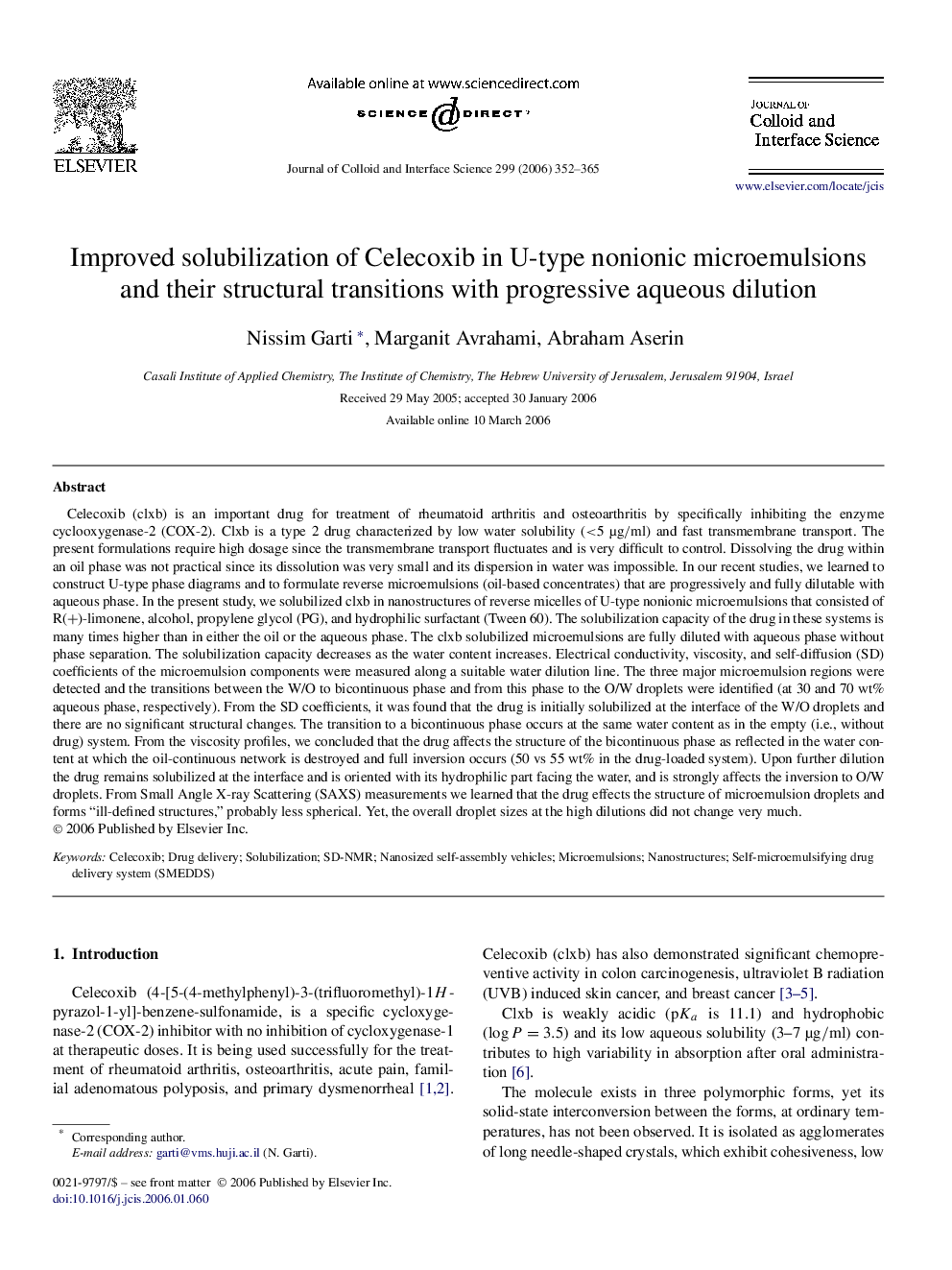| کد مقاله | کد نشریه | سال انتشار | مقاله انگلیسی | نسخه تمام متن |
|---|---|---|---|---|
| 613307 | 880719 | 2006 | 14 صفحه PDF | دانلود رایگان |

Celecoxib (clxb) is an important drug for treatment of rheumatoid arthritis and osteoarthritis by specifically inhibiting the enzyme cyclooxygenase-2 (COX-2). Clxb is a type 2 drug characterized by low water solubility (<5 μg/ml) and fast transmembrane transport. The present formulations require high dosage since the transmembrane transport fluctuates and is very difficult to control. Dissolving the drug within an oil phase was not practical since its dissolution was very small and its dispersion in water was impossible. In our recent studies, we learned to construct U-type phase diagrams and to formulate reverse microemulsions (oil-based concentrates) that are progressively and fully dilutable with aqueous phase. In the present study, we solubilized clxb in nanostructures of reverse micelles of U-type nonionic microemulsions that consisted of R(+)-limonene, alcohol, propylene glycol (PG), and hydrophilic surfactant (Tween 60). The solubilization capacity of the drug in these systems is many times higher than in either the oil or the aqueous phase. The clxb solubilized microemulsions are fully diluted with aqueous phase without phase separation. The solubilization capacity decreases as the water content increases. Electrical conductivity, viscosity, and self-diffusion (SD) coefficients of the microemulsion components were measured along a suitable water dilution line. The three major microemulsion regions were detected and the transitions between the W/O to bicontinuous phase and from this phase to the O/W droplets were identified (at 30 and 70 wt% aqueous phase, respectively). From the SD coefficients, it was found that the drug is initially solubilized at the interface of the W/O droplets and there are no significant structural changes. The transition to a bicontinuous phase occurs at the same water content as in the empty (i.e., without drug) system. From the viscosity profiles, we concluded that the drug affects the structure of the bicontinuous phase as reflected in the water content at which the oil-continuous network is destroyed and full inversion occurs (50 vs 55 wt% in the drug-loaded system). Upon further dilution the drug remains solubilized at the interface and is oriented with its hydrophilic part facing the water, and is strongly affects the inversion to O/W droplets. From Small Angle X-ray Scattering (SAXS) measurements we learned that the drug effects the structure of microemulsion droplets and forms “ill-defined structures,” probably less spherical. Yet, the overall droplet sizes at the high dilutions did not change very much.
Microemulsions are excellent vehicles for solubilization of Celecoxib. Electrical conductivity, viscosity, diffusion coefficient (SD-NMR), SAXS, and QELS are suitable methods to clarify the interfacial behavior of the Celecoxib and its effect on the interfacial partitioning of the surfactant, cosurfactant, cosolvent, and the oil phase.Figure optionsDownload as PowerPoint slide
Journal: Journal of Colloid and Interface Science - Volume 299, Issue 1, 1 July 2006, Pages 352–365